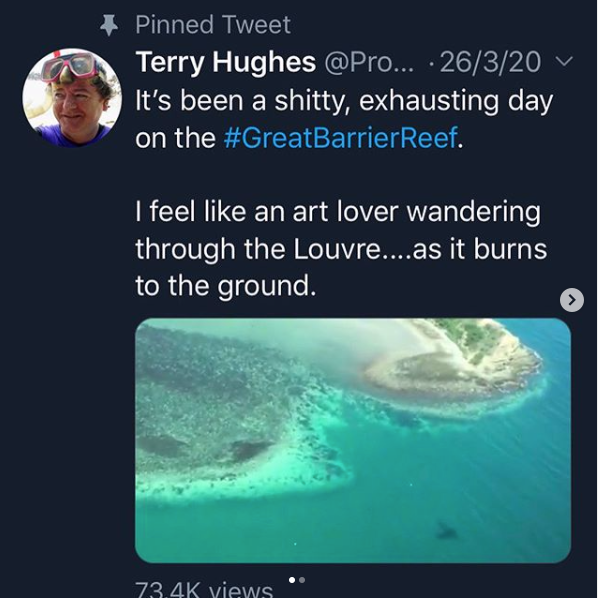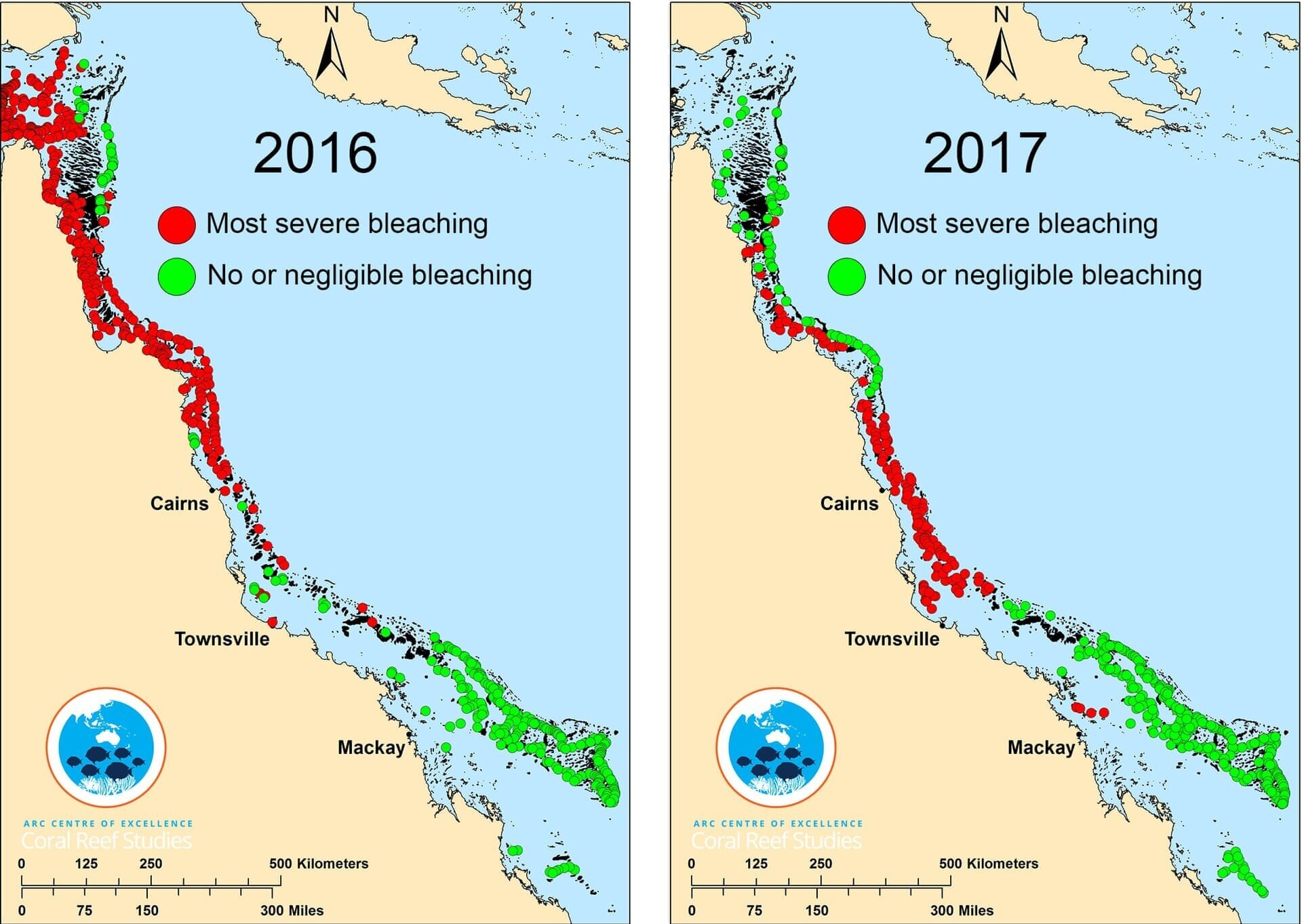The Great Barrier Reef’s is undergoing its third mass bleaching event in 5 years. Data released yesterday announced that the Great Barrier Reef experienced its third mass coral bleaching event in five years and its most widespread to date

Australia’s leading marine scientist David Wachenfield hopes that this will serve as a wake up call for further action. Urging people not to lose hope he tells the Guardian that “people need to see these [bleaching] events not as depressing bits of news that adds to other depressing bits of news.
As Australian summer is well underway marine park authorities along with the Centre of Excellence for Coral Reef Studies have surveyed 1,036 reefs to document current bleaching. Their findings reveal that over 25% of the reefs are severely bleached, as well as being the most widespread bleaching event since 1998, encompassing both north, central and southern regions of the great ecosystem. Mass bleaching had never occurred in the southern region—south of Mackay—an area with large numbers of heat-sensitive coral. However, February 2020 recorded the highest surface heat temperature since records began in 1900, this may cause tropical reefs to reach a tipping point causing annual bleaching events.
Terry Hughes—director of the Centre of Excellence for Coral Reef Studies at James Cook University— explains how bleaching at that extent leads to “high levels of mortality” of corals.

The Great Barrier Reef has undergone five mass bleaching events: 1998, 2002, 2016, 2017 and now 2020. As you can see the time between each event is shrinking, Hughes underscores how “that’s important, because it takes a decade or so for a half-decent recovery of even the fastest-growing corals. The slowest ones take several decades.”
Up until now the GBR has survived mass bleaching events due to its sheer (so large it can be seen from space) making it particularly resilient. Yet, each bleaching event causes lasting damage making the GBR endure a slow and painful death.
What is causing coral bleaching?
Warmer ocean temperatures caused by climate change. Why does bleaching occur at higher temperatures? corals are complex creatures that live in a symbiotic relationship with algae (zooxanthellae). Under stress they will expel the algae—causing them to lose their colourful pigment. Corals can survive bleaching events, but it makes them more vulnerable to mortality.
The only real solution to coral bleaching
Despite promising research on improving corals’ heat resilience, Wachenfeld emphasizes how “dealing with the climate problem is the underpinning for everything else to work.”















